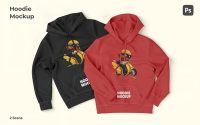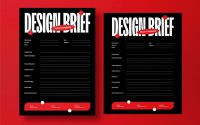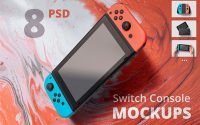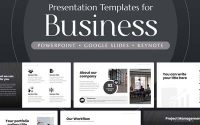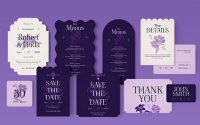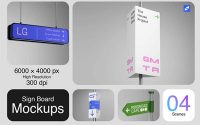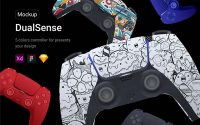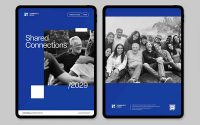Standing for 10.2% of the global retail sales in 2017, the eCommerce segment still grows fast and makes a substantial contribution to the international economy. Reflecting the statistic in the money equivalent, the input of the online selling platforms worldwide reached 2.3 trillion dollars in 2017. According to Statista, the numbers are expected to grow by 17.5% by 2021.
Without a doubt, the world of online shopping sets its own marketing rules. Some trends indeed worth your attention as they boost conversions like crazy. At the same time, the wrong implementation of the trendy marketing techniques by the inexperienced marketers can lead to fails.
Therefore, this article will be particularly focused on the eCommerce trends to use super carefully (or even avoid) in 2019.
The following recommendations will be useful for both beginners and reputable online store marketers as this fast-changing tough marketing world can bring unexpected nasty surprises that end up with loss of customers and reduction in sales.
So, it’s time to look at your marketing strategy from another angle and, probably, fix it to reach ultimate success in 2019.
Trend #1. Minimalistic Design
The minimalistic design appeared as a reaction to the complicated websites full of distracted visuals and other heavy styling elements. According to the recent study conducted by EyeQuant, clean minimalistic websites have lower bounce rates. The study analyzed 300 online stores and made a conclusion based on:
- the modern machine learning algorithm that estimates the clarity of a website on a scale of 0 to 100 (according to the co-founder and CEO of the design analytics company, the results are at least 85% accurate);
- the opinion of thousands of people (potential customers of these stores).
Additionally, the visual clarity of the website tends to influence one-third of a customer’s decision to stay on the page.
Though the results might not be 100% accurate, minimalism is steadily entering the world of web design. It becomes a major trend and offers dozens of worthy WordPress themes to build a top-notch website fast.
Unfortunately, it happens that people interpret trends literally and tend to overdo in their attempts to go with the flow.
Namely, one of the riskiest things about minimalistic design is a negative space between visual elements. Initially, it is supposed to contribute to attraction to the key information. Still, sometimes it has an opposite effect and distracts visitors with irrational use of space.
For instance, the portfolio website of Rik Catlow used to have an unsustainable structure and a big amount of unused white space:

Currently, it looks different and has a full-screen background video of Rik working on his project. Simultaneously, a line with social media channels where visitors can get more information follows a stunning performance up.
Another sample of how space on the minimalistic website can be used is a website of the Bouguessa eCommerce store with clothes:

Achromatic colors combine with high-quality typography that containing different font sizes draws attention to the important information.
Trend #2. Flat Design
Minimalistic design is sometimes confused with a flat one. Both of the conceptions stand for an appealing look of the website and convenience for users.
Yet, flat design is about visual aesthetics. A website still can be complicated and contain various buttons, CTAs, widgets, etc. The goal of the flat design compared to amateur work is that it looks simpler and more authentic to the digital space.
Minimalistic design, in its turn, is a philosophy that is wider than a conception of the flat website.
Remaining one of the major web design trends in 2019, a flat design still hides some dangers.
Trying to reach a visual hierarchy, designers usually use a bunch of textures, shadows, gradients, etc. While it is, mostly, unusual for flat design, some websites tend to look poor rather than simple.
For instance, this cassette tape icon has a long shadow that neither helps users somehow nor contributes to the aesthetics of the website.

Another dangerous aspect of implementing this trend in the eCommerce website is that it is focused, as a rule, on a smart mixture of colors and typography. These elements particularly help to draw customer’s attention and present the most relevant information (promotional campaigns, special deals, etc.).
Still, it is crucial to keep up with a certain conception as all colors have meanings, while typography supplements an overall picture. So, a sense of style is a must-have in this case.
How to Find Balance?
The logic question of how to find the balance will more like to appear after reading the first two points of the article.
Unfortunately, there is no single formula for 100% user-friendly and trendy design of a website. Still, there are hundreds of awesome marketing agency HTML templates that were designed according to the latest marketing trends and optimized for speed and search engines.
Therefore, it is crucial to test different marketing strategies and techniques and find out what works for you. Use space wisely and don’t overdo with styling elements and widgets. Furthermore, convenience and the needs of your potential customers should be a priority.
Trend #3. Interactive Elements
Without a doubt, interactive elements do contribute to the engagement of the customers. At the same time, overloading a website with animation, moving sliders, parallax effects and other things can end up in a costly mistake.
In particular, they can act as a barrier between what a customer needs and what he finds on the website.
For instance, if you build a website for a loan company that operates only online, launching a mortgage calculator and a contact form definitely makes sense. Still, there is no need in adding a calendar or a Google map as it brings no use for potential clients.
It is important to come up with a question “What value does a certain element have for a user?”
In addition, all interactive elements do take the space on the website and slow down the loading speed. Therefore, give priority to those elements that are useful for the customers but don’t distract their attention.
As a bad example, here is a PayPal email receipt conception by Vladyslav Tyzun posted on Dribble:

It leaves a couple of seconds to view the details of the receipt and, obviously, it is not enough.
Trend #4. Personalized Activity
Personalization is the next marketing trend that creates hype among those building an eCommerce website. The first step usually lies in identifying the target audience. The second one – in adjusting the website and the advertisement to the needs and online activities of the potential customers.
In this case, it is crucial to find the fine line between reminding about your brand, helping customers to navigate through the website and becoming obsessive and irritating.
For example, do you face those products appearing in the sidebars and similar to those that you already searched on the Internet? This is one of the hundreds of samples of personalized techniques that try to bring the customers back to the online store.
Trying to boost conversions, the marketers start analyzing customer’s behavior, shopping habits, interests, and browser’s history. This knowledge helps to personalize the website to the target group.
The one thing you should remember in this case is that there are usually several target groups according to the age, location, micro niche preferences, etc. Furthermore, don’t forget that both new potential customers and returning ones visit your website.
Therefore, you should start to cover the interest of all groups of customers. For example, you can offer a couple of homepage layouts for new and returning customers or create several versions of the website for the major countries (cities, language groups) that more frequently visit a website and make purchases. By this, I mean not only translating the website but taking into account cultural background.
Do you remember a raucous McDonald’s attempt to meet the French market using a famous Gallic cartoon icon Asterix as a part of the McDonald’s advertisement in France?
Despite the controversial attitude to this trick, this is a striking example of how marketers try to highlight the cultural identity of the certain nation but don’t depart from the brand conception.
Trend #5. Betting on Visuals
Without a doubt, visuals are a vital part of almost every website, especially speaking of eCommerce stores. They aim to show off the products and services, promote campaigns, advertise, draw customer’s attention, whet the appetite, etc.
74% of shoppers point out that they would more likely to stay and explore a product page if it contains visuals. The same resource shows that 82% of online shoppers consider an eCommerce store to be more credible.
Still, stuffing an online store with product photos, stunning campaigns, video reviews, etc. is not enough to be called a user-friendly website with splendid visuals.
It’s crucial to find a balance between text and visuals as, at the same time, product descriptions give more information about the quality, parameters, usage peculiarities, sizes, and other features.
Yet, in this sample, the balance is totally lost and the product page looks chaotic:

Moreover, pay attention to the quality of the images. It goes without saying that using high-resolution photos is a must-have. If they are too heavy for a website and slow down its loading, just use one of the dozens of image compressors and picture optimizers.
If the image contains a text, make sure it is relevant, and what is more important, readable. Otherwise, you can create an awkward situation:

Do you see what is written right after Clothing? Me neither.
Probably, you will be a little bit confused after reading this article and come up with a normal question: Should I follow eCommerce trends then?
Without a doubt, taking into account the latest trends in web design is crucial but not all of them worth implementation on your website. Most of them require thorough testing.
At the end of the day, it is more important how fast and easy the customer will find something that (s)he looks for. So, if a certain trend doesn’t contribute to a stress-free and convenient shopping, then you should reconsider its value to your online store.
